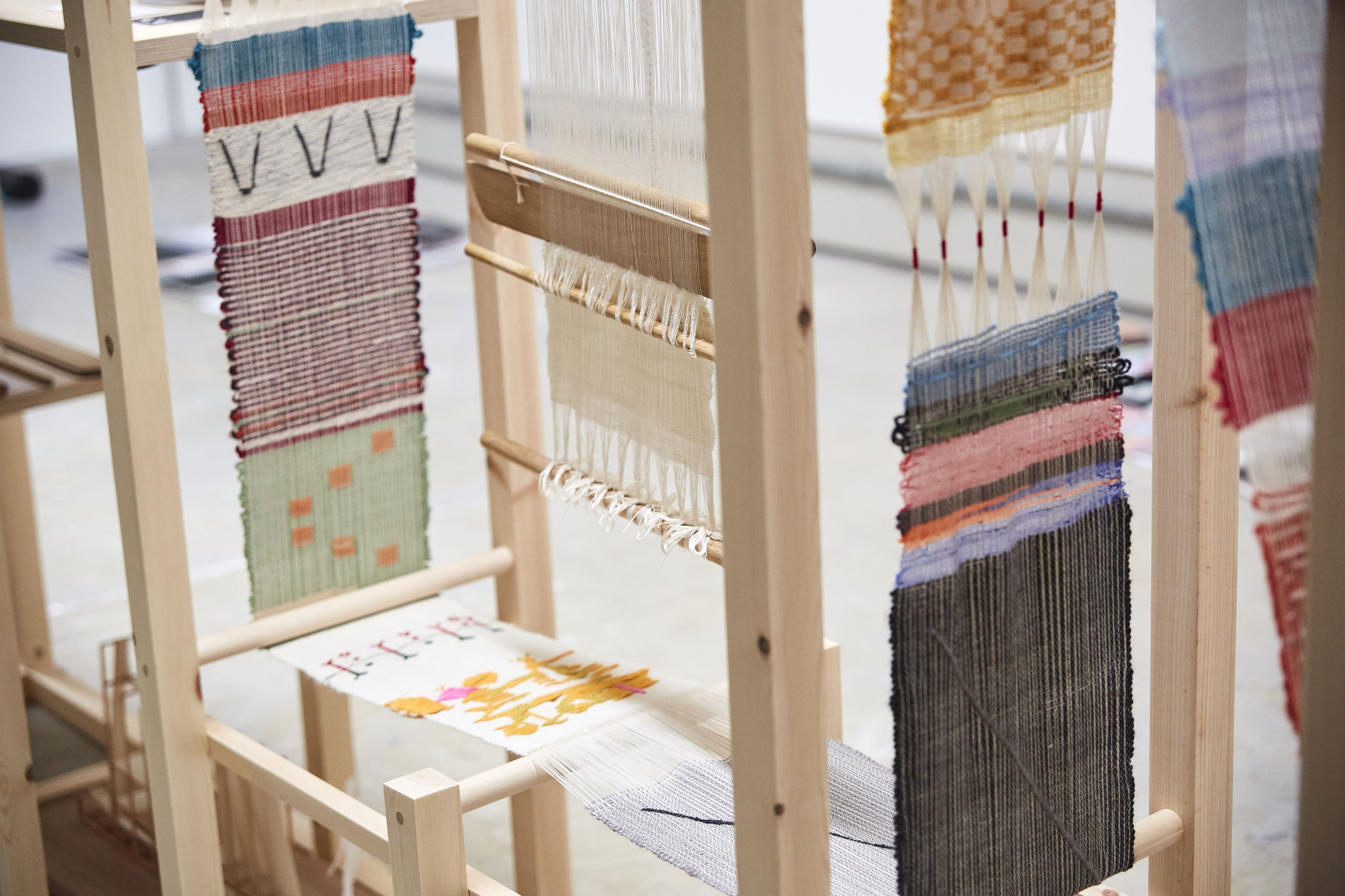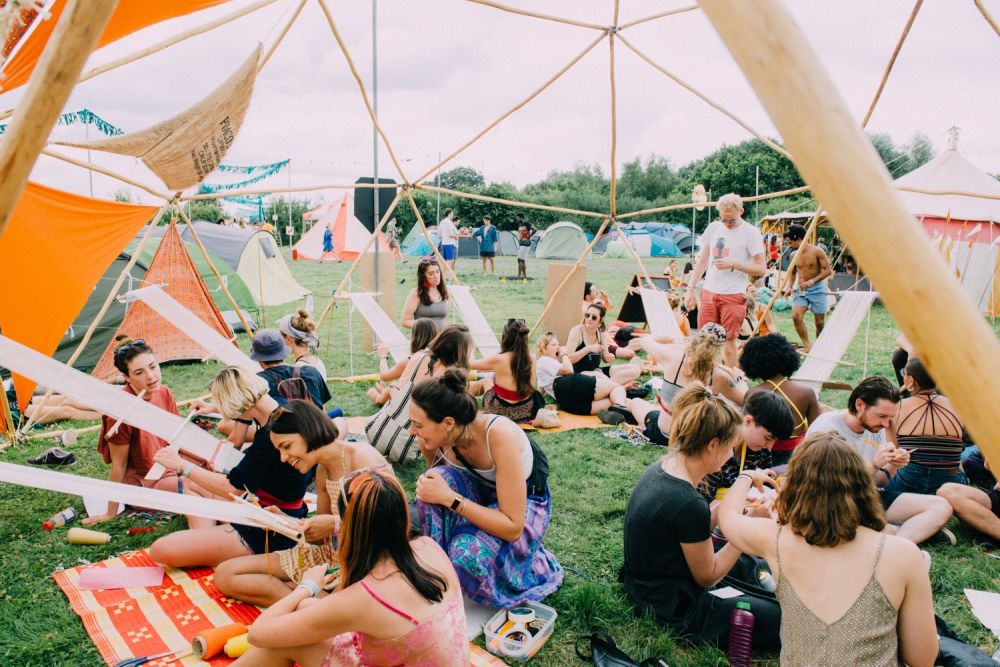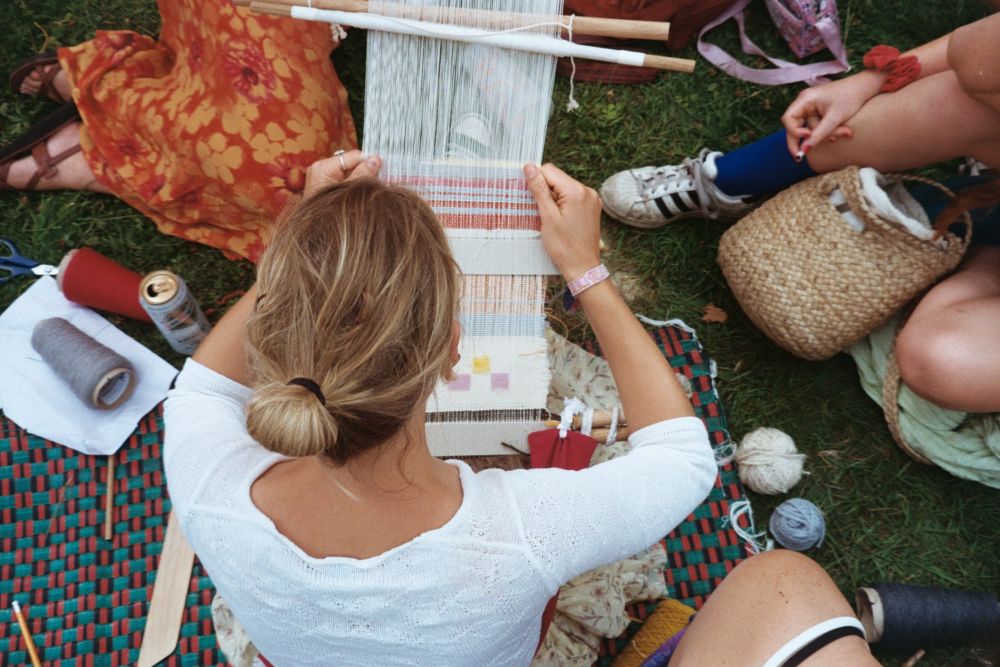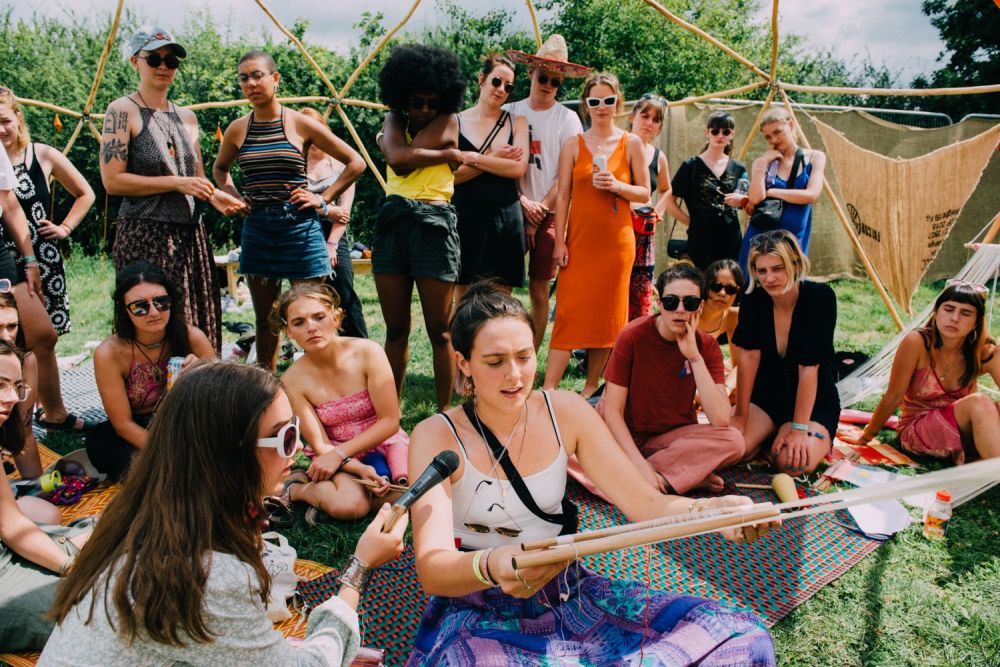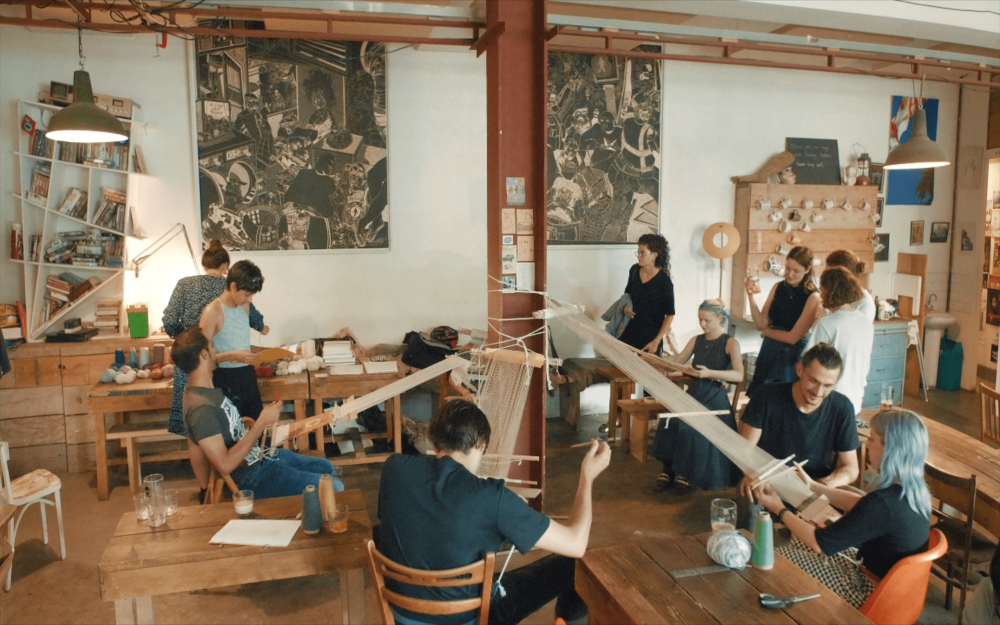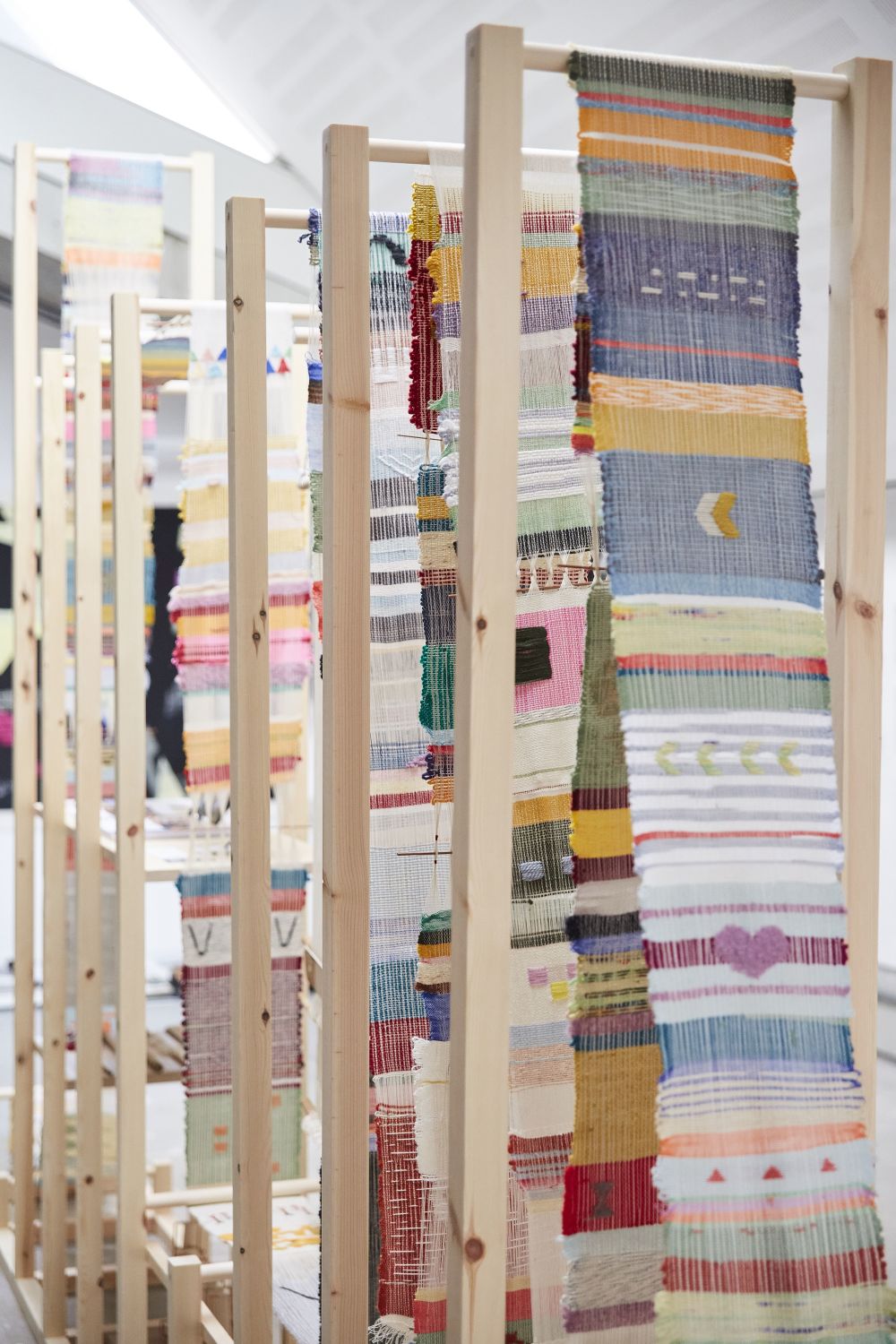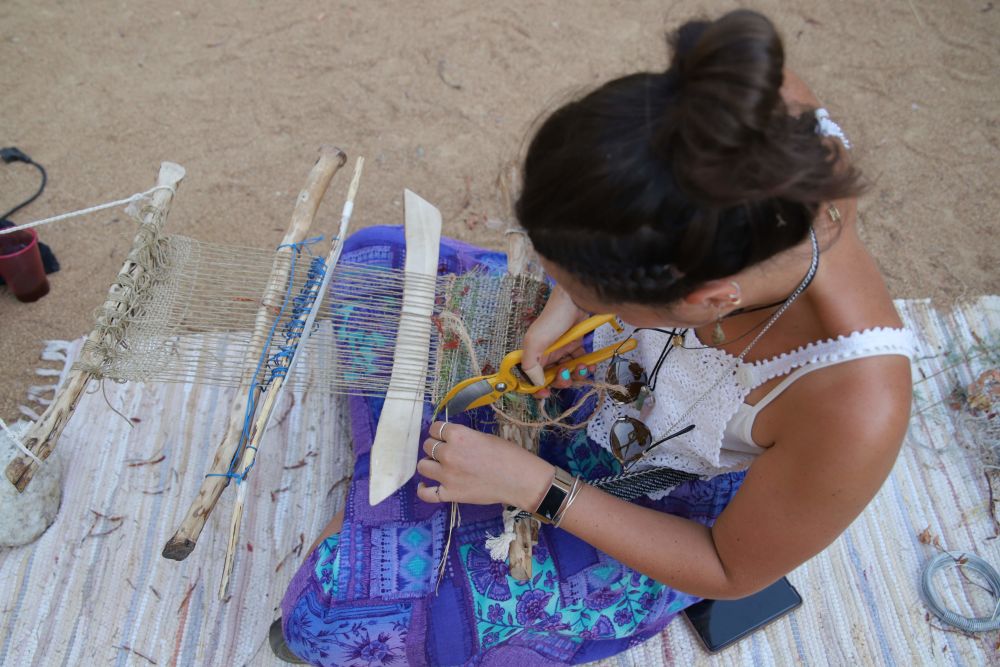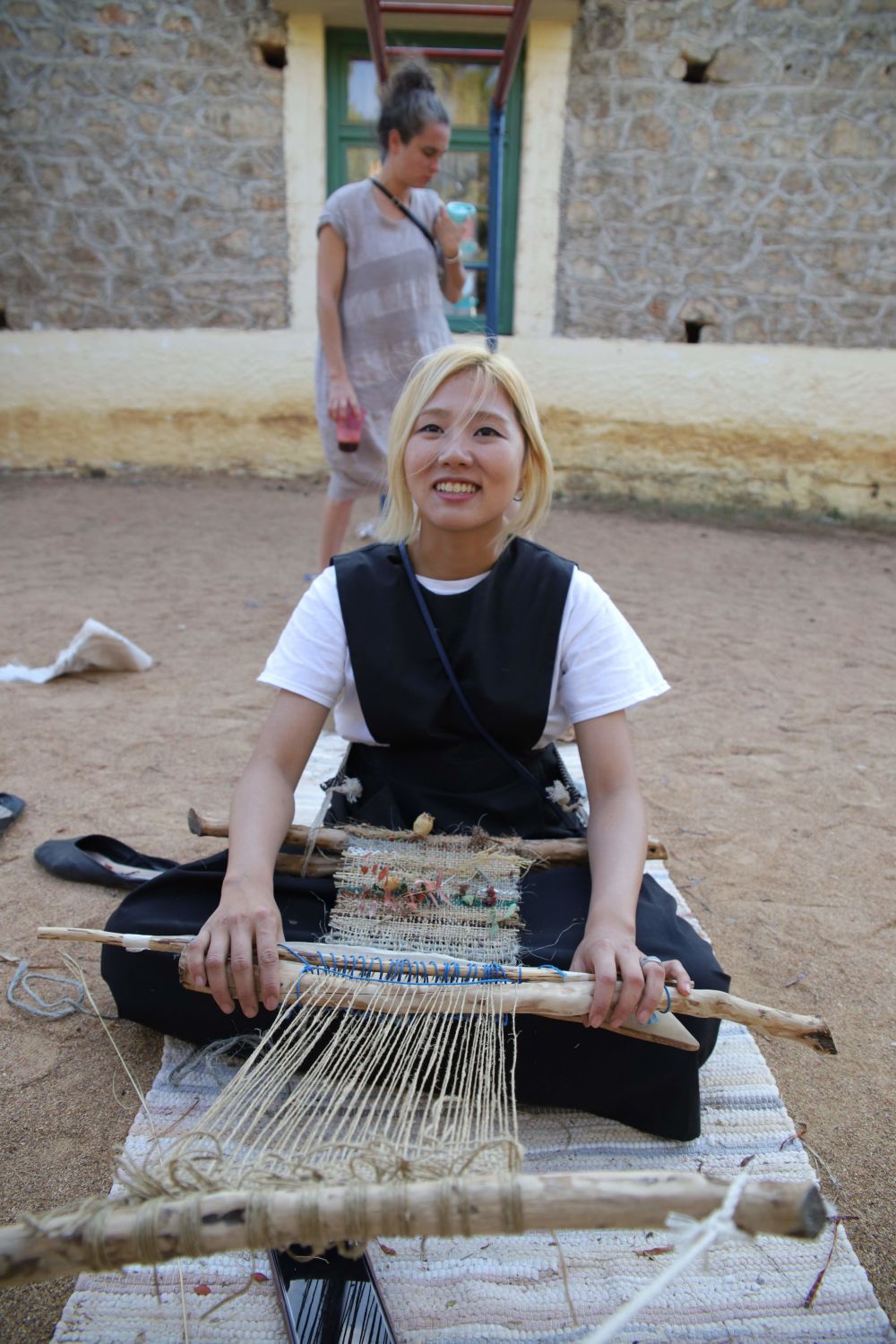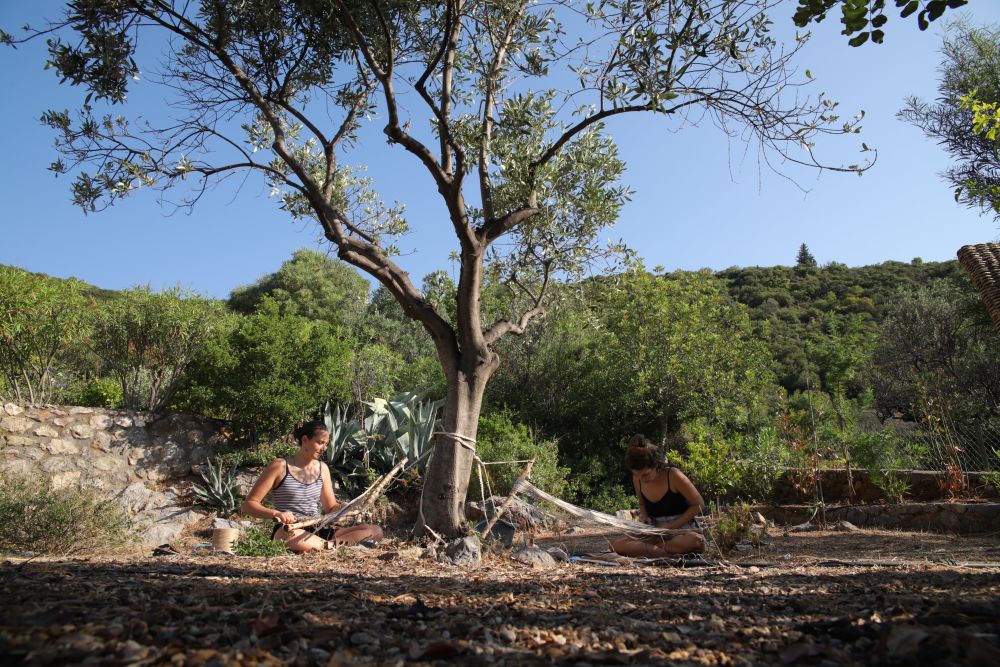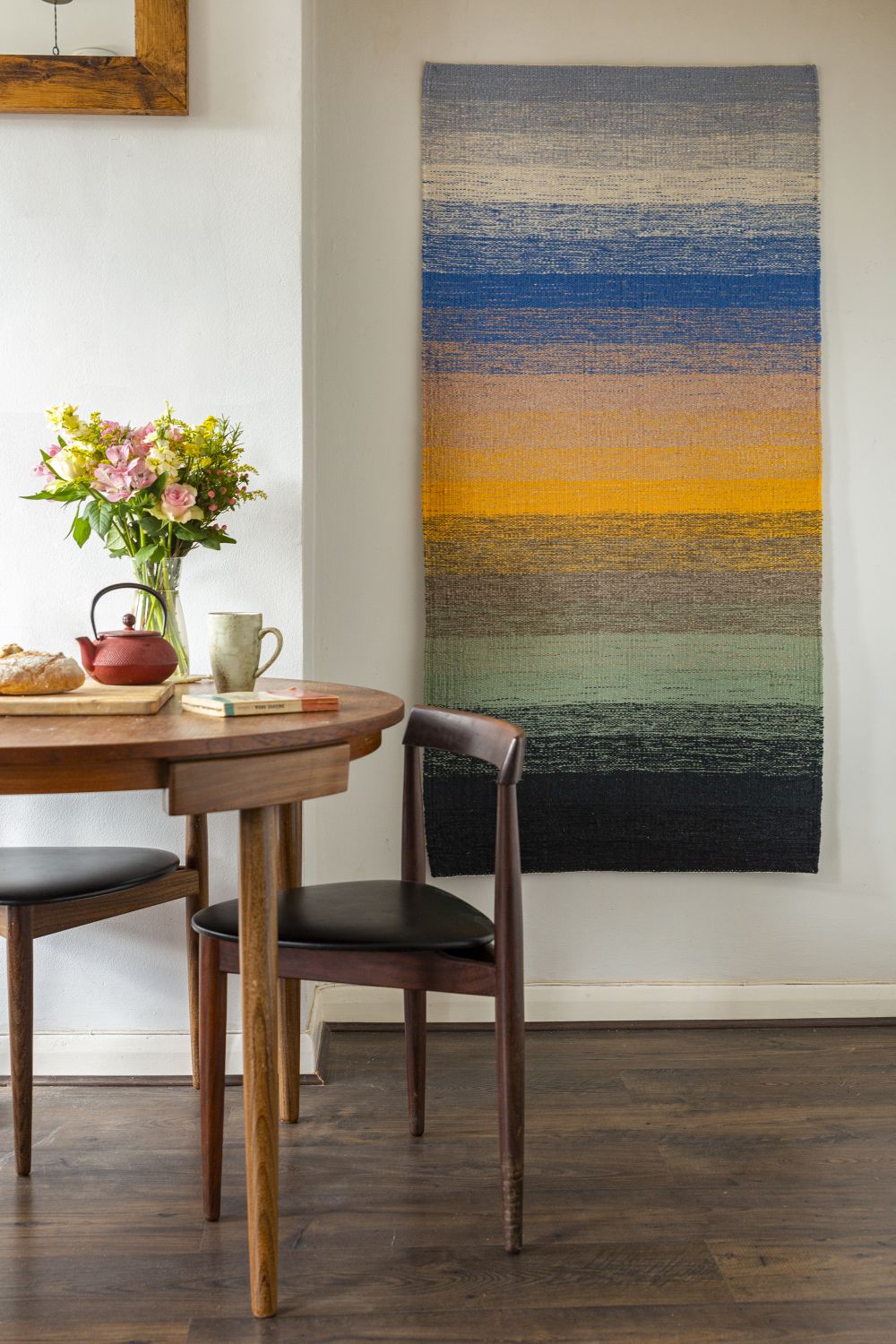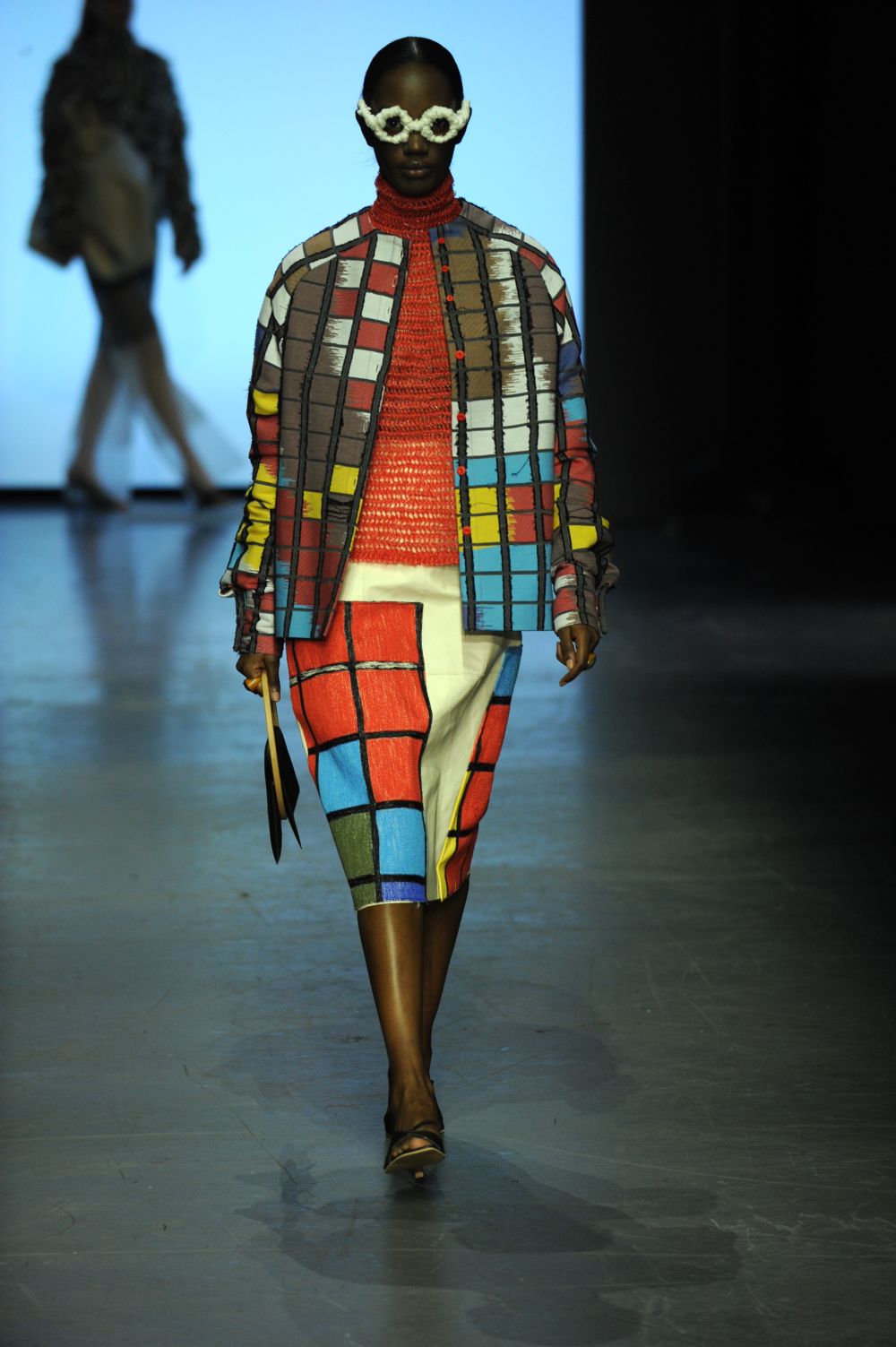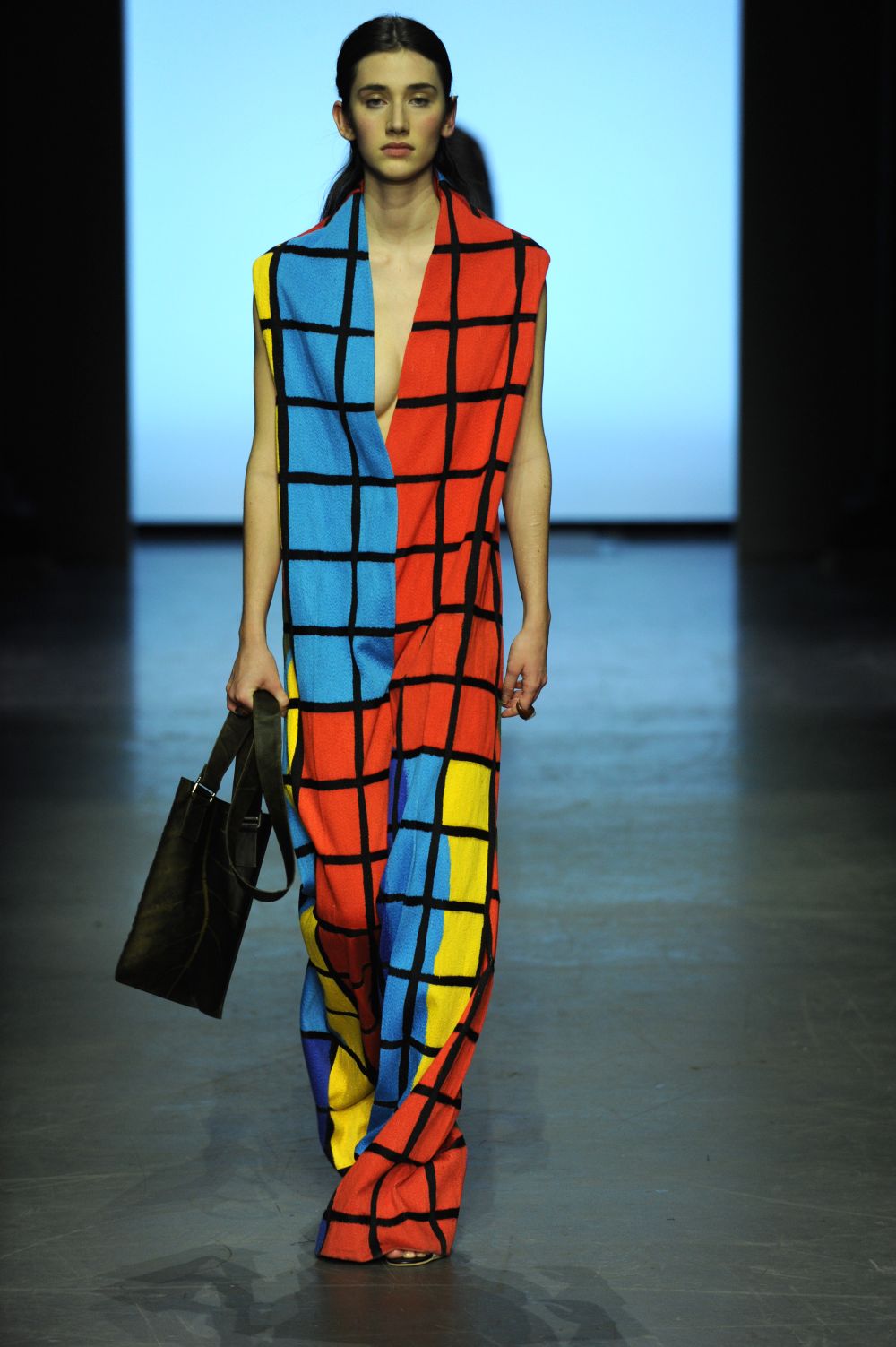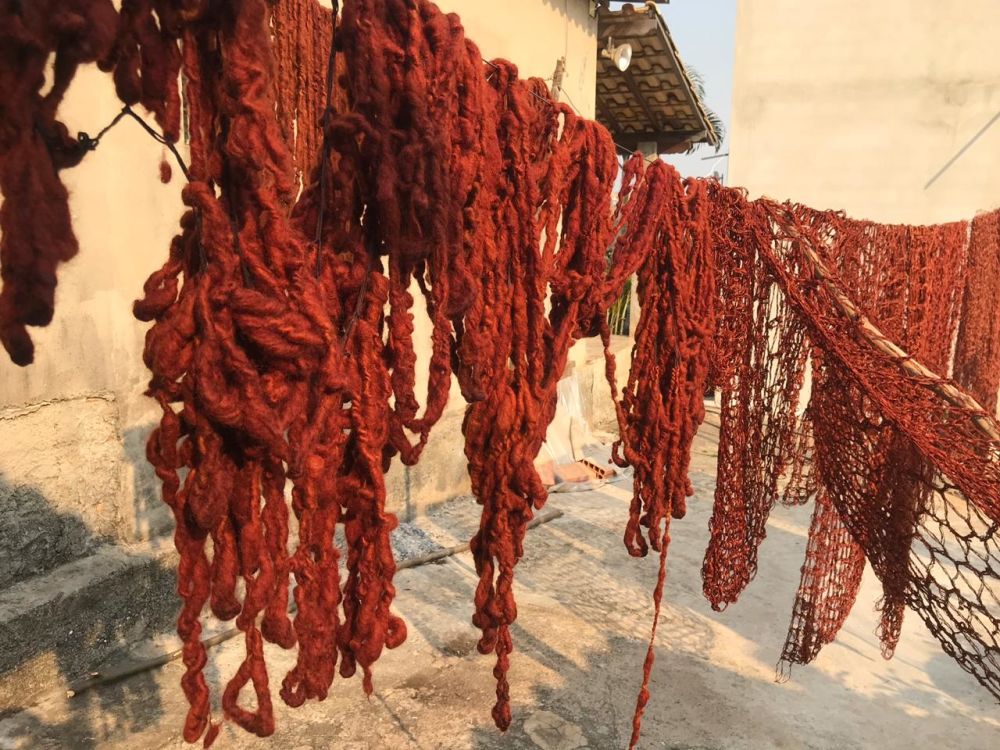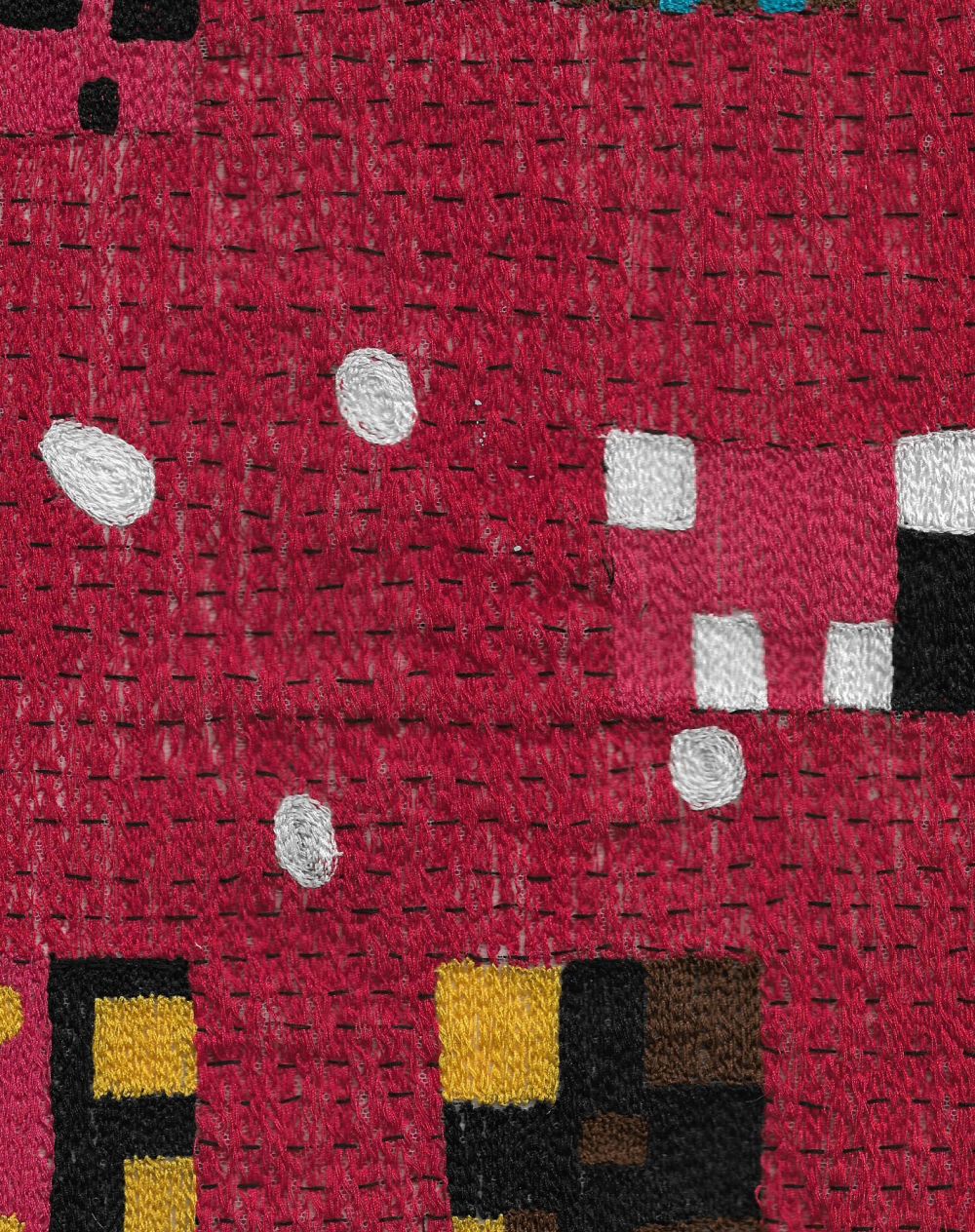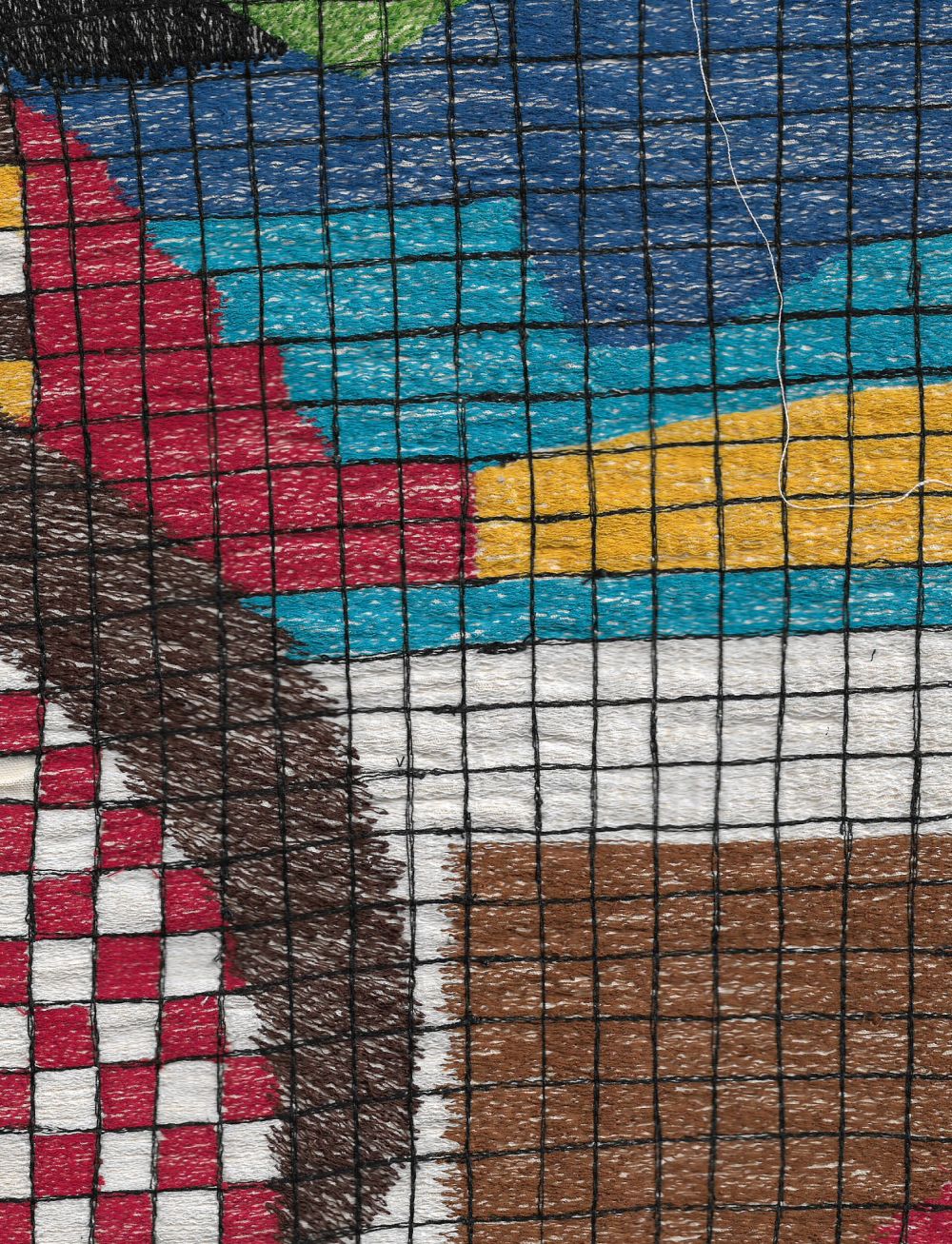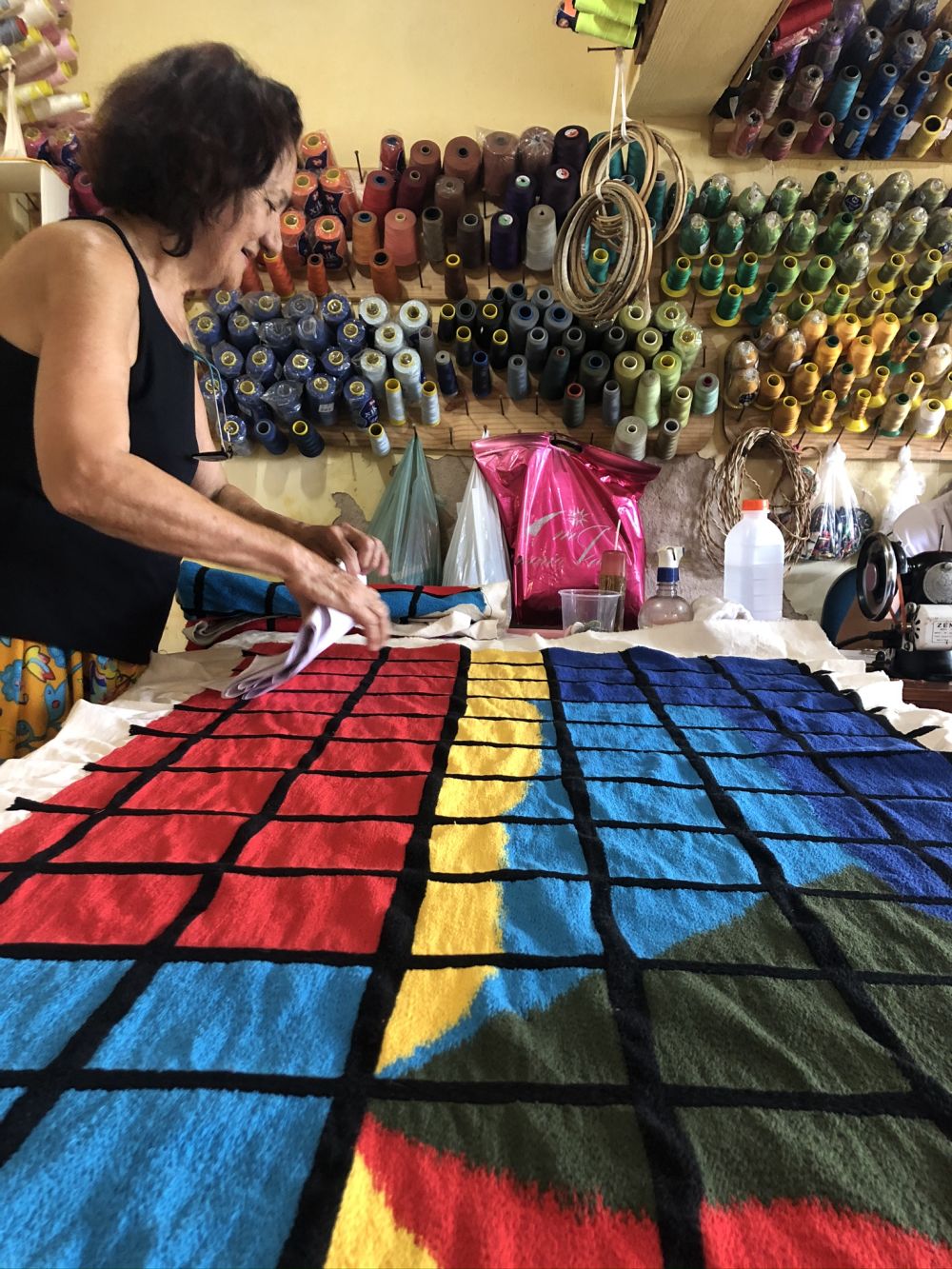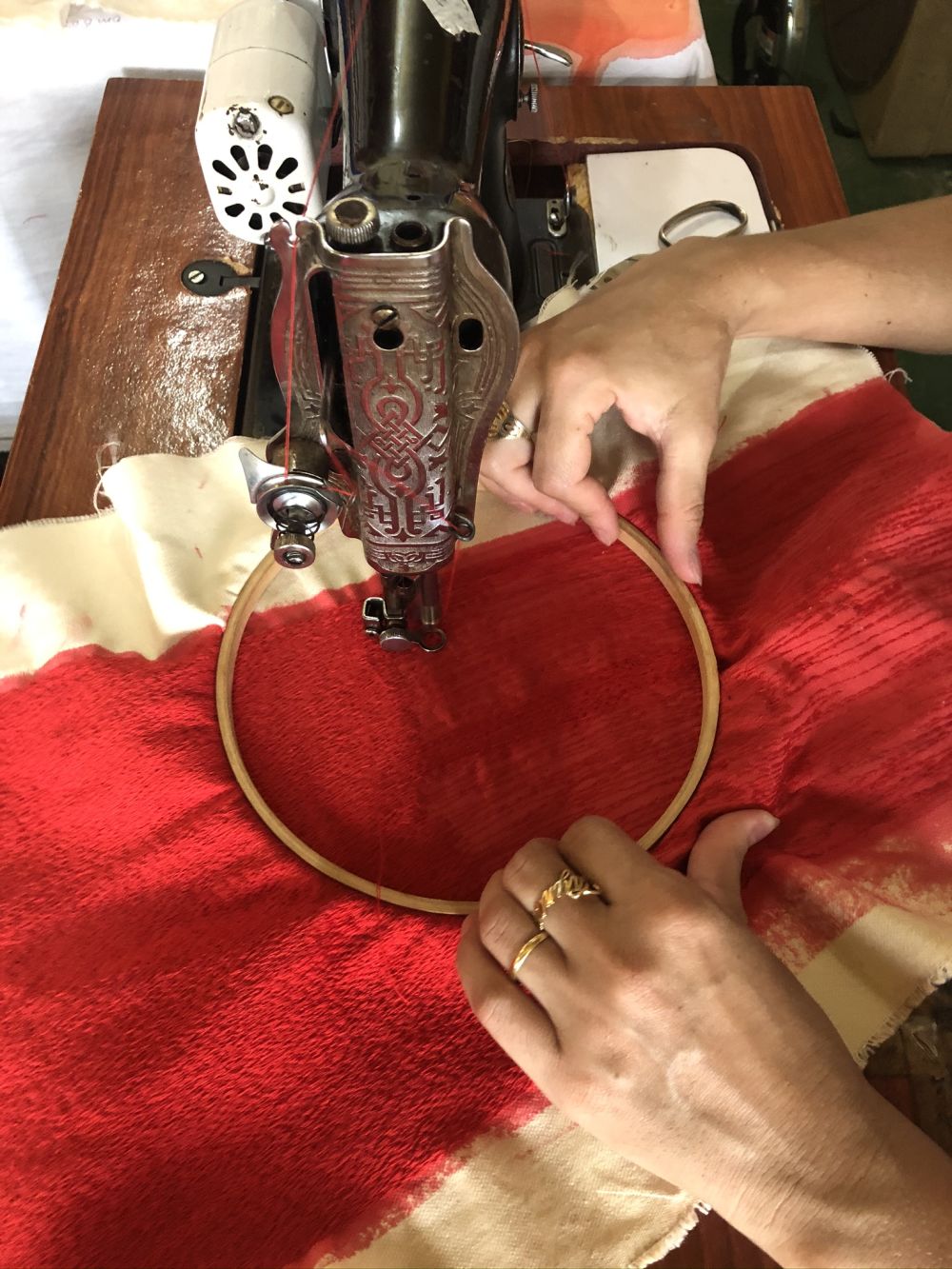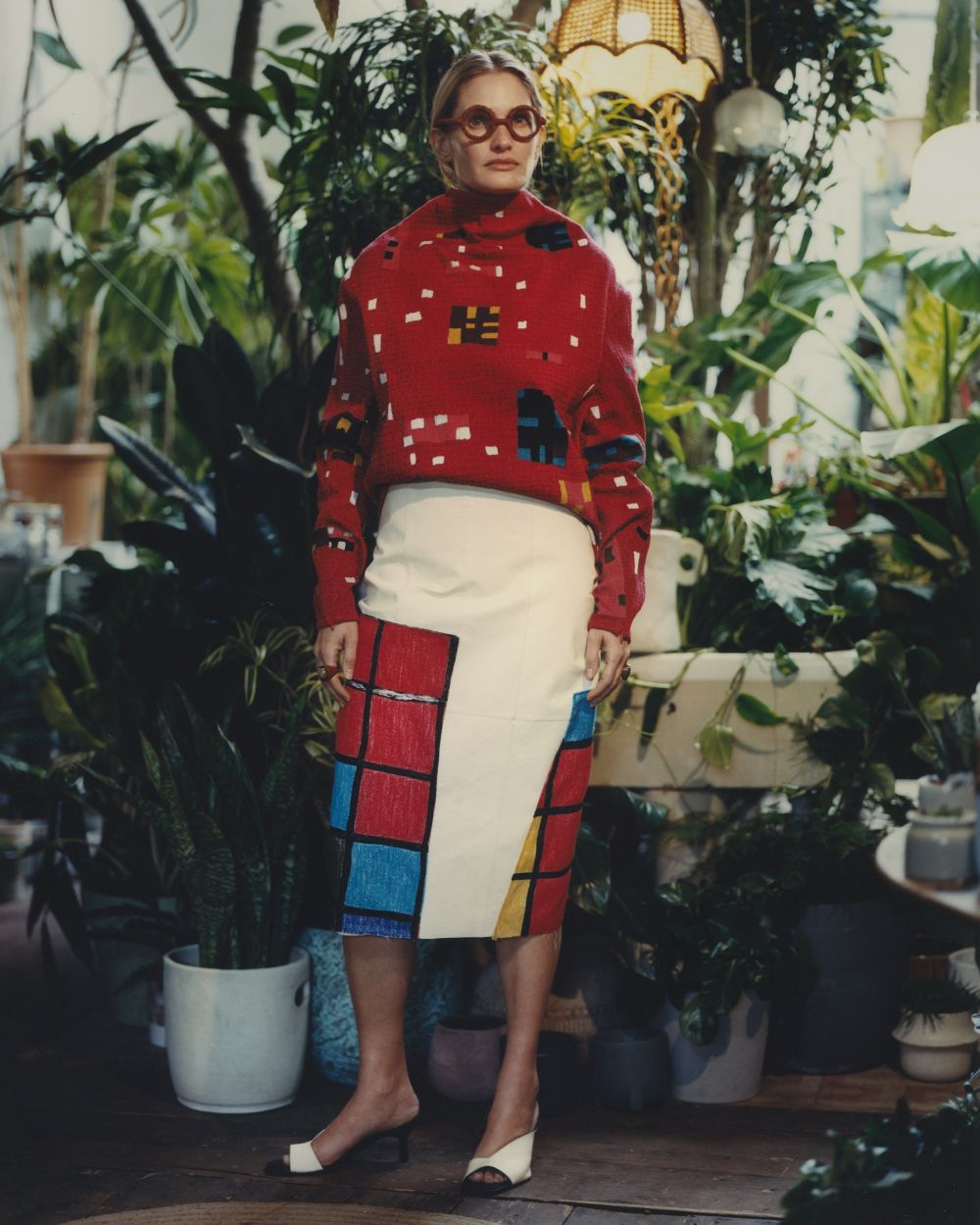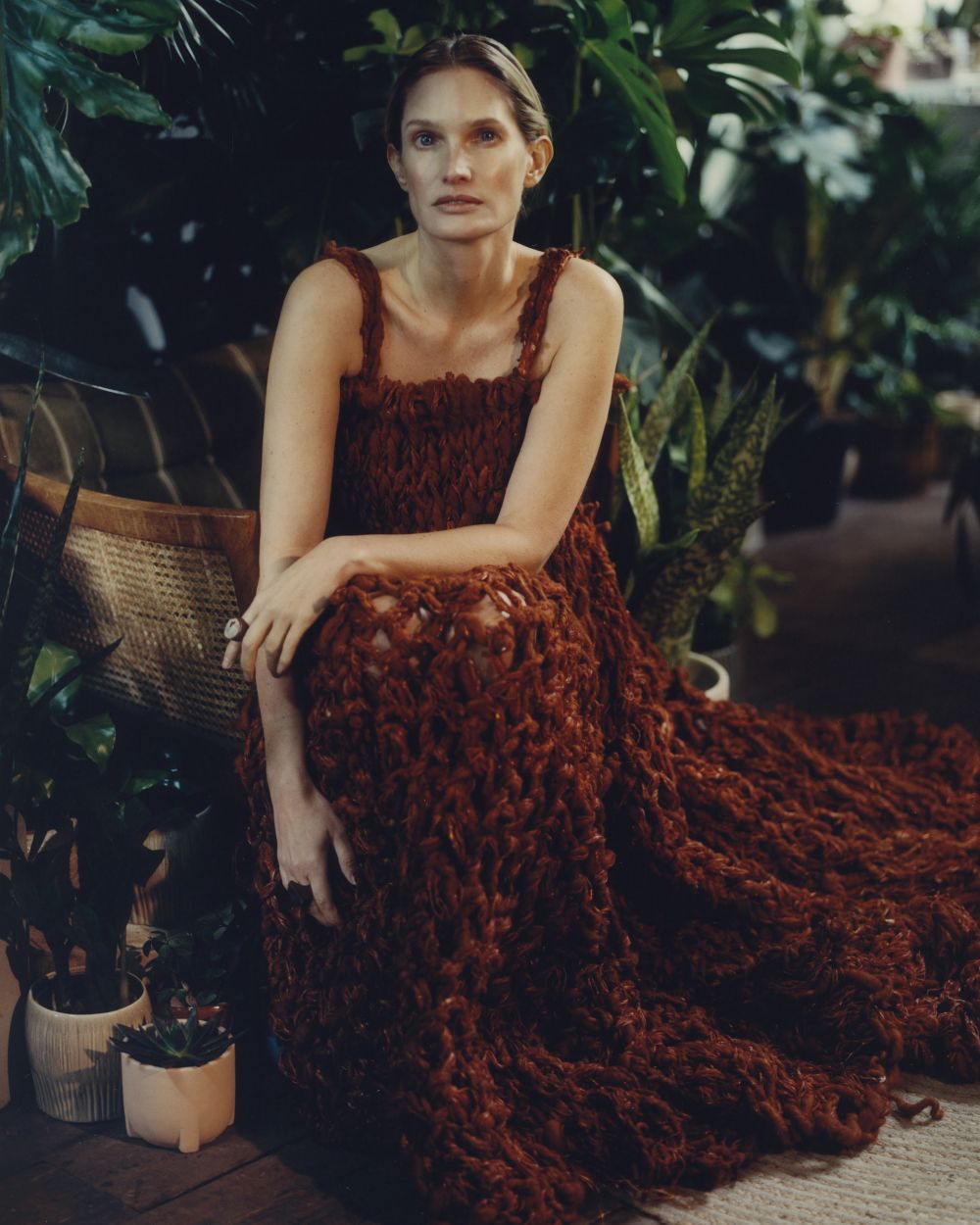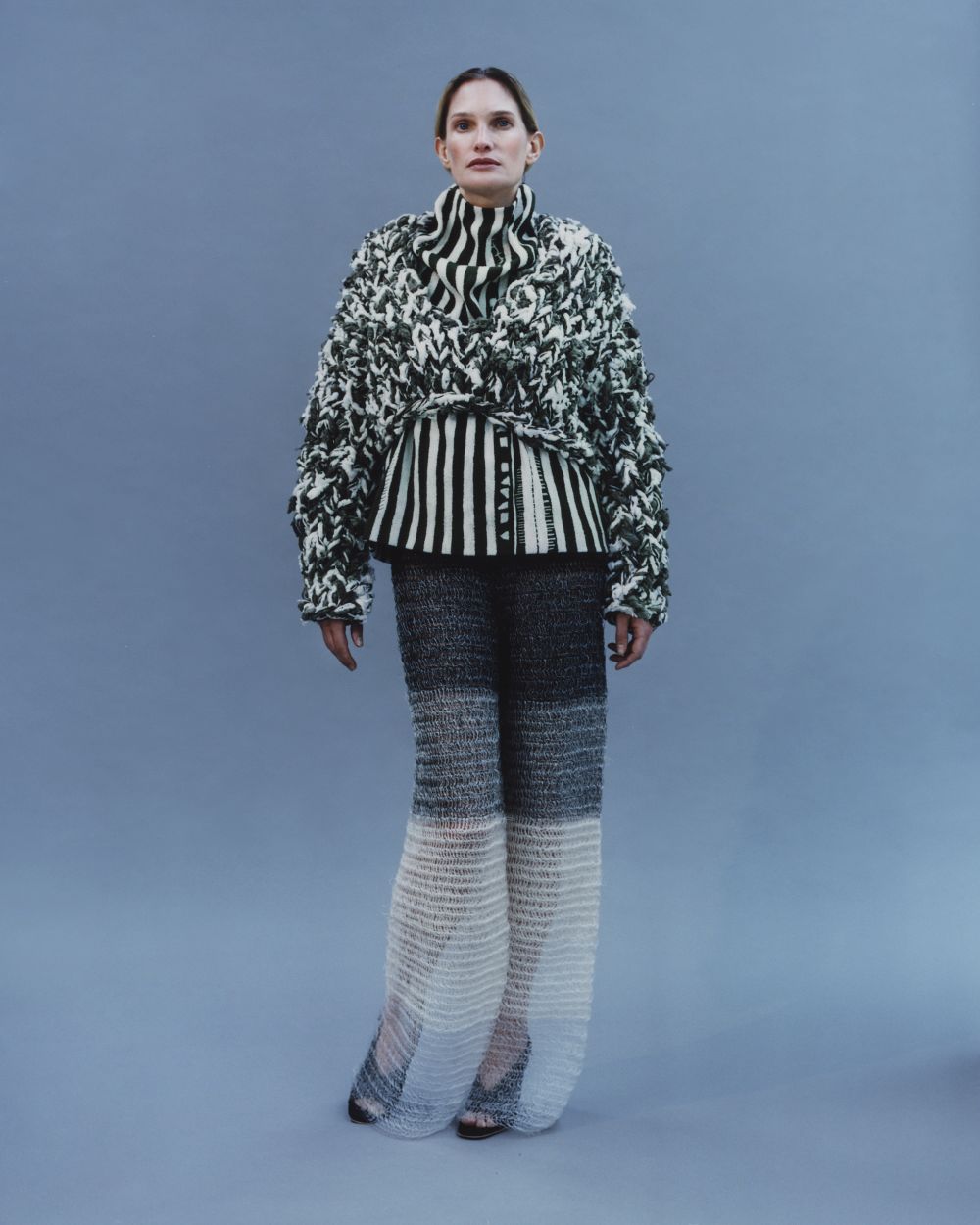Sara Kelly & Joao Maraschin have been selected for the AER residency at THREAD: Artist Residency & Cultural Centre. The programme posits that art, culture, and architecture should be supported in tandem with agriculture, education, and health.
Set up by Professor Lucy Orta UAL Chair of Art for the Environment in 2015, The Art for the Environment International Artist Residency Programme (AER) provides UAL graduates with the exceptional opportunity to apply for short residencies at one of our internationally renowned host institutions, to explore concerns that define the 21st century – biodiversity, environmental sustainability, social economy, and human rights.
Read Sara Kelly's letter of Motivation:
My design history to date combines my passions for textiles, Architecture and graphic design. Over the past 7 years, I have achieved a postgraduate degree in Textile Design and an undergraduate degree in Architecture as well as many years of professional experience. My knowledge and understanding of the built environment mixed with my passion for conservation and traditional crafts has altered my path towards a career where design and sustainability are at the forefront. Coupled with a confident and friendly character I am able to create, research and communicate effectively, inspired by my surroundings and the current climate. I enjoy working in a team, and interacting with new people on a daily basis. I am driven by purpose and energised by success and I pride myself through the achievements in my work.
I completed an MA in Textile Design from the Chelsea College of Art in 2019 where I received a distinction and was offered a full scholarship from the Ashley Family Foundation. My final project, ‘Woven through Experience’ was nominated and shortlisted for the Tiffany & co. x Offset award. For my Design project, I was researching and using the backstrap loom as a tool for social interaction. My work aimed to educate and bring together communities through the practice of craft.
After a 3 month trip to Mexico and Guatemala, the project looked at traditional weaving techniques of Central America to better understand their physical and mental connection to their craft. I made a series of backstrap looms and hosted free, drop-in workshops throughout London for people to participate in and add to a growing tapestry of weaving..
My work strives towards a more sustainable future, and I am conscious in my designs to maintain this ethos. I developed ideas of sustainable textiles and process, which influenced the project to become self-sustained, made from second-hand materials at a low-cost.
I would like to continue this ethos during the residency and begin exploring local natural materials within my work. This project developed my interactional skills as well as helped me understand more about working collaboratively with members of the public, enabling them to experience a new craft that is social, therapeutic and rewarding. I exhibited the final 18m piece of fabric, woven by 117 people, on a bespoke handmade timber frame.
Throughout my time at Chelsea, I trained professionally with London-based rug weaver, Christabel Balfour, and continued to work with her once I graduated. Training with Christabel, has given me the opportunity to work within the professional weaving industry, learning about many rug weaving techniques, working with clients, and the restoration of large floor looms. I have experienced the pressures of the industry; meeting deadlines and working alongside clients to produce high quality bespoke products. This ongoing role enabled me to begin a career fuelled by craft and I believe it has given me the tools and knowledge to continue my personal practice as well as work within a managerial role and studio technician. I worked along-side Christabel to make important decisions that affected the wellbeing of the business.
Before my MA, I studied Architecture at Newcastle University in 2013, where I explored themes of conservation at the Sir John Soane Museum, London. I graduated in 2016 with 2:1 BA honours. I then worked as a Part 1 Architectural Assistant with Julian Harrap Architects LLP. This role sparked my interest in traditional crafts, culture and history, all of which have stimulated my excitement towards the AER 2020 residency with Thread.
As I look forward, I am seeking an opportunity to use my skills and knowledge to experiment with new materials to create woven art. I believe I would be a great candidate for the residency as well as add positivity and innovation to the Josef and Anni Albers Foundation.
As well as my love of making and experimenting, I enjoy and understand the importance of research. Above all, I make sure my work is supported with the sufficient evidence.
I have a passion for spaces, craft and materials that are authentic to the people who use them. This curiosity to create, sparked my interest to study architecture and informed my work as a designer. It excites me when both concept and narrative are used at the start of a project and materialise in the final result. At heart, I am a storyteller and I have worked fluidly as both designer and performer within my work.
I am interested in discovering more about design, especially within textiles, architecture and urbanism, in other cultures, communities and disciplines and with my knowledge and experience, I think this makes me a great candidate for this residency. I am particularly drawn to Thread, Senegal as I feel the ethos of the organisation resonates strongly with my own personal interests and will give me the tools to advance my personal work within a new community.
I am eager to create woven pieces from locally sourced materials, and inspired by the people and culture around me, learning from my experiences throughout. I believe that I have the capability, interest and determination to participate in residency and contribute to it positively.
Sara Kelly's Portfolio
Read Joao Maraschin's Letter of Motivation:
The core motivation of my work is to be able to create narratives, weave stories with and about the people I come across. By doing so, I hope to drive social change by challenging the way the fashion ecosystem works.
Art and cultural projects, community collaboration development and the aim to keep traditional knowledge of craftsmanship alive are at the centre of my practice and values. The ethos of my work is based on supporting handmade techniques like crochet, handmade weaving and embroidery, as well as working with new discoveries in raw materials - I have recently worked with a bio-product research from leaves of a plant used in reforestation farms. I am interested in looking at circularity, up-cycling waste and leftovers, material and dead stock re-purpose, support vulnerable artisans, research biodegradable new discoveries and human centred design.
I have recently graduated from the MA in Fashion Design Technology Womenswear at London College of Fashion, with a project based around collaborative community framework. The graduation master’s project is the first collection of my eponymous brand, aiming to celebrate diversity by proposing new ideas to create a more inclusive scenario for a mature demographic as well as to get involved with creative practitioners in vulnerable conditions. For this collection, I worked with two communities in Central Brazil, that were inactive. Most of the practitioners are older than 70 years old, and did not have any demand for almost two years before I reached out. Now, they are up and running again, and the exposure with the work we developed together, brought interest to their craft and it is generating new sources of income already.
For me, the stories behind every relationship are important and key to social, cultural and economic development, aspects that inform the brand’s USP. Across many collaborations, I stand for equality of rights, fair share and positive impact. I believe in the idea of learning from each other.
My drive is to assist communities to thrive by tackling problems through partnership. The collaborative process sustains cultural acknowledgment and creates opportunities for social and economic development. By teaming up with artisans and communities, we build skills together. When sharing my experience and vice-versa, the learning curve is that we get to innovation by challenging the status quo.
My collections tell stories and there is where my proposal lies. The decision-making of a theme comes from research developed around topics from critical theory and historical moments blended with contemporaneity. Moreover, it works the same way for me to be using traditional knowledge and allowing it to take new forms in the modern world.
I also believe that the conventional idea of pyramid shaped creative process in fashion, where the creative director is at the top and trickles down finished ideas for the team to make, is dead. I prefer to use a horizontal approach, where every single person is responsible for something different, but equal to one another. No one simply executes something, we work together.
From the contrast of experience, background, aspirations and testing, we achieve something unique. Something that represents the result of people coming together. The framework of the project is to co-create a collection with the community. It is to have their voice heard in the creative process and o.er the skills I learnt from my master’s project. In thirty days of residency, we would walk through a collection project from conceptualisation, design development, product generation, experimentation and prototyping. The methods I will be applying are: primary research by photographing the surroundings, the community, landscape, nature; mood and image board creation; fire technique with generation of ideas with quick responses; collaging; drawing; contextual design; content analysis; mind-mapping; sketchbook and diary generation; 3D development’ mock-ups; fabric manipulation; questionnaires; and sampling.
I am from Brazil, and a lot of my country’s history was written by institutions and individuals from other lands. From Portuguese colonisation, the close relationship with the Spanish and slavery from Africa, to decolonisation. The collection would be born from the experience of being a traveller not only from the literal definition of it, but mainly from the perspective of having a purpose but not knowing the destination, ready to take in every insight that the road has to o.er as well as exchanging experience and knowledge.
The residency will generate the third collection of a series that has been built since the Foreigner Traveller AW20 collection and follow the On The Road SS21, currently in development.
I believe the residency would be highly beneficial to the development of the collection, because through joining together to work in a shared vision, each side is opening itself to new expectations, understanding and attitudes. The learning curve lies on the exchange of the creative process. Therefore, the cultural partnership fieldwork within the residency will provide effective ways to collaborative craftsmanship development.
Fashion is a powerful instrument/media for addressing issues, also useful in restoring identity as well as providing community inclusion and intersection. I am part of the Positive Fashion Initiative from the British Fashion Council, presented during London Fashion Week. The result of the project will be presented as the brand’s collection for Autumn Winter 2021.
